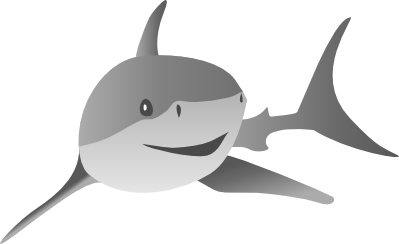Optimizers and Trainers¶
Shark 3 comes with two related but different software architectures that at a first glance both represent the act of learning, or the application of learning rules: optimizers and trainers. This article explains the differences between the two, and how they are combined with the ErrorFunction and OptimizationTrainer classes.
Optimization in Shark¶
Optimization methods are at the basis of many machine learning problems. These can be as diverse as minimizing a smooth (regularized) empirical risk functional, or searching a genotype space for a (local) minimum.
General purpose optimization has been difficult to realize with older versions of Shark for two reasons: First, the interfaces for direct (evolutionary) optimization and gradient-based optimization have been part of the different sub-libraries EALib and ReClaM with incompatible interfaces. Second, the gradient-based search interfaces had the consequence that general-purpose optimization algorithms were only applicable to problems expressed as functions of model parameters.
In Shark 3 all optimization problems inherit the AbstractObjectiveFunction base class, and all optimization strategies are derived from AbstractOptimizer. At this general level there is no explicit link to machine learning problems yet, such that it is easy to use the library for any type of optimization problem. Of course, the available methods are of relevance for machine learning.
In Shark, optimization is modeled as a process of iterative refinement. For example, such a refinement step can correspond to a generation of an evolutionary algorithm or to a gradient step. This iterative proceeding is reflected in the AbstractOptimizer::step() interface.
Training of Models in Shark¶
In Shark, predictions about data are made by models, and the parameters of models are set and modified by trainers, which encode learning rules. At a first glance, if machine learning problems are formulated as optimization problems, what then is the difference between an optimizer (modeled by AbstractOptimizer) and trainer (modeled by AbstractTrainer)? The concepts do indeed differ in the following three aspects:
First, model training is an atomic step, in contrast to an iterative optimization process. This is reflected by the AbstractTrainer::train() interface.
Second, model training is understood as machine learning, thus, learning from data. Hence, training data needs to be provided to the train method. In contrast, the more general optimization framework may but does not need to involve data.
Third, a trainer encodes a specific learning rule, in contrast to a general optimization strategy. For example, the IRpropPlus algorithm is a very general gradient-descent algorithm, which can be used to minimize any differentiable function, no matter whether it depends on training data and model parameters or not. In contrast, training a linear model to do a linear discriminant analysis (LDA) is specific to a certain class of models, in this case linear models, and requires a certain type of training data, in this case a classification problem. Thus, IRpropPlus is an optimizer, while LDA is a trainer. This entails that the whole training procedure is known to the trainer and thus very special optimization strategies can be applied - for example if the problem is convex and separable.
Model Training as an Optimization Problem¶
Now let us consider an important mixed case, namely training a feed forward neural network with gradient descent on the squared error using IRpropPlus. This requires the construction of the squared error of the network output as an objective function which can be optimized by the IRpropPlus algorithm. This functionality is provided by the ErrorFunction class. The ErrorFunction knows about data, a model, and a loss function, and it computes the average loss of the model output on the given data. Thus, the first way to train the network is to apply the IRpropPlus algorithm to an ErrorFunction object that knows about the network, a SquaredLoss object, and our training data.
However, Shark provides a second mechanism for training the same network, which amounts to casting the above process into a trainer. The OptimizationTrainer class encapsulates the above iterative training procedure by means of three objects: An AbstractLoss, an optimizer, and a stopping criterion. The last component is encapsulated by the AbstractStoppingCriterion interface. This interface allows the OptimizationTrainer to implement the optimization loop and to make training based on iterative optimization a single opaque step.


